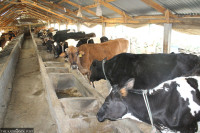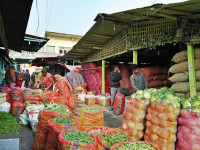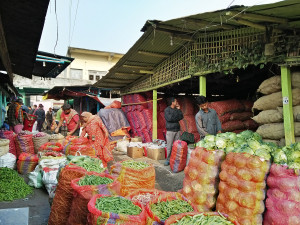Money
Country braces for negative economic growth in 33 years
Hard put by an unofficial blockade imposed by India and continued protests in the Tarai region for the last two and three months respectively, Nepal could see a negative economic growth for the first time in 33 years.
Prithvi Man Shrestha
Hard put by an unofficial blockade imposed by India and continued protests in the Tarai region for the last two and three months respectively, Nepal could see a negative economic growth for the first time in 33 years.
Nepal Rastra Bank (NRB) on Friday said that the country’s economic growth could contract to negative (-0.9 percent) in the current fiscal year. The last time Nepal saw a negative economic growth was in fiscal year 1982-83 when GDP growth had contracted by 3 percent.
Making public the first official assessment of the impact of the unofficial Indian blockade on Nepali economy, the central bank said that two-month-long blockade along with three-month-long Tarai unrest has badly hit all sectors of the economy—agriculture, industrial and service sector. Indian blockade on Nepal had started on September 23, three days after Nepal promulgated the new constitution.
The NRB report titled ‘Impact of unofficial Indian embargo on Nepali economy’ states that blockade is also likely to push three percent of Nepal’s total population under the poverty line, as it has directly hit the income and employment of people living in Tarai hard.
According to the Central Bureau of Statistics, Nepal’s projected population in 2015 is 28 million, which means the blockade is likely to push more than 800,000 people to extreme poverty. The number is more than the number of people who were pushed below the poverty line by the devastating earthquake of April 25. The Post Disaster Need Assessment Report prepared by the National Planning Commission had estimated that the April 25 quake pushed 700,000 people below the poverty line.
The central bank in its report has projected two scenarios on economic growth.
Under the pessimistic scenario, the economy is likely to contract by 0.9 percent this fiscal. The NRB has explained this scenario as the impact of current blockade if it continues till mid-January.
The NRB has presented an optimistic scenario, as per which the economy could witness a growth, but would be somewhere around 1.7 per cent. This, however, will be possible only if the embargo is lifted immediately.
In both scenarios, the economy is likely to incur a loss of Rs 33-53 billion in potential economic output.
NRB’s Research Department Chief Nara Bahadur Thapa, who coordinated the study, said that economic activities have remained virtually come to a standstill due to the embargo whose impact will be clearly seen in the growth. “The study was carried out nationwide, and it is an objective analysis of the losses incurred by the economy,” said Thapa. Economists say that making up the losses incurred during the prolonged banda and embargo would be difficult.
Former vice-chairman of National Planning Commission Shankar Sharma said even if the embargo is lifted immediately, it will take time to bring the situation to normalcy. “The acceleration of economic activities in the last few months might not be sufficient to attain positive economic growth,” he said.
Showing the reduced economic activities, the report said that there has not been any import of fuel from Birgunj border point through which two third of fuel is imported during normal times, and less than 10 percent of fuel is being supplied from other border points. As a result, only 10-25 percent of vehicles are plying the road.
There has been a shortage of food and medicines imported from India, and their limited supply has not been distributed justifiably. Health services have been affected and schools have remained closed for the last three months.
Paddy production was hit hard due to the shortage of chemical fertilizers as they are stuck at Indian border points. “If the current situation continues, it will hit wheat production as well,” the report said.
According to the central bank study, major hydropower projects that had been closed after the earthquake have not come into operation yet and road and irrigation projects have been hit by the lack of fuel.
As far as the tourism sector is concerned, hotel occupancy has remained at just 20 percent and due to the shortage of fuel, network service providers, data centres and disaster recovery companies in the banking sector may not provide service for a long period of time. The NRB also said that as the impact of embargo has started to be seen in the inflation, maintaining it at the targeted 8.5 percent will be challenging.
The government had targeted the economic growth of 6 percent this fiscal year on the ground that reconstruction activities would speed up after the earthquake. But, reconstruction work is yet to start as the reconstruction authority has not been formed.




 14.12°C Kathmandu
14.12°C Kathmandu















